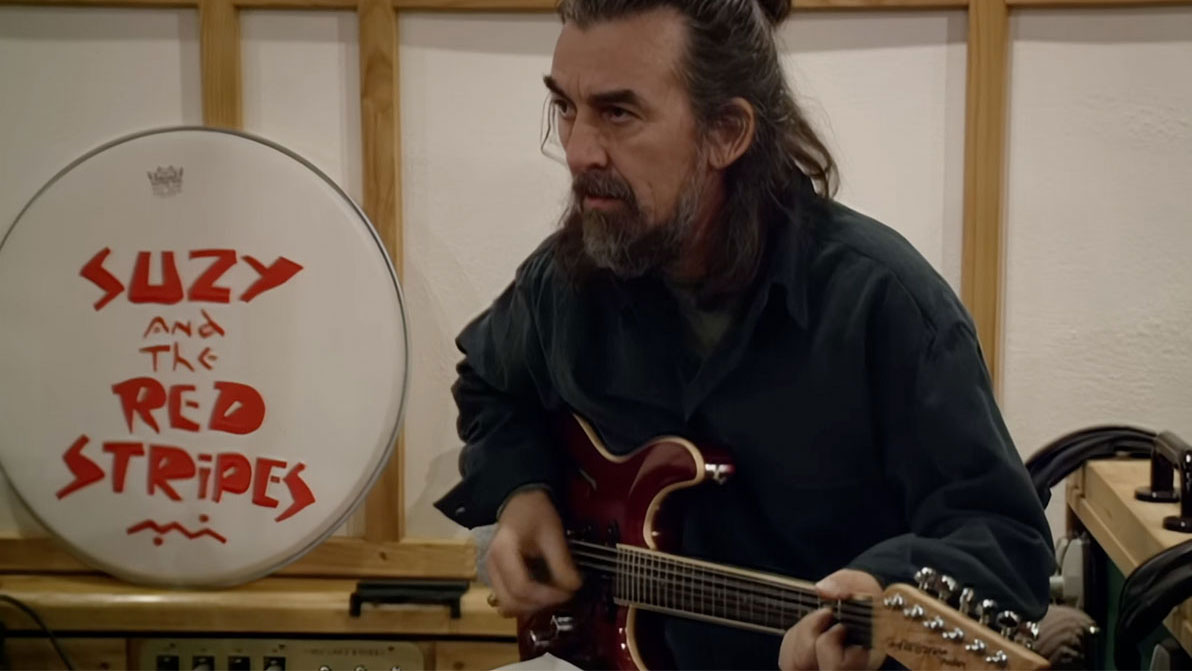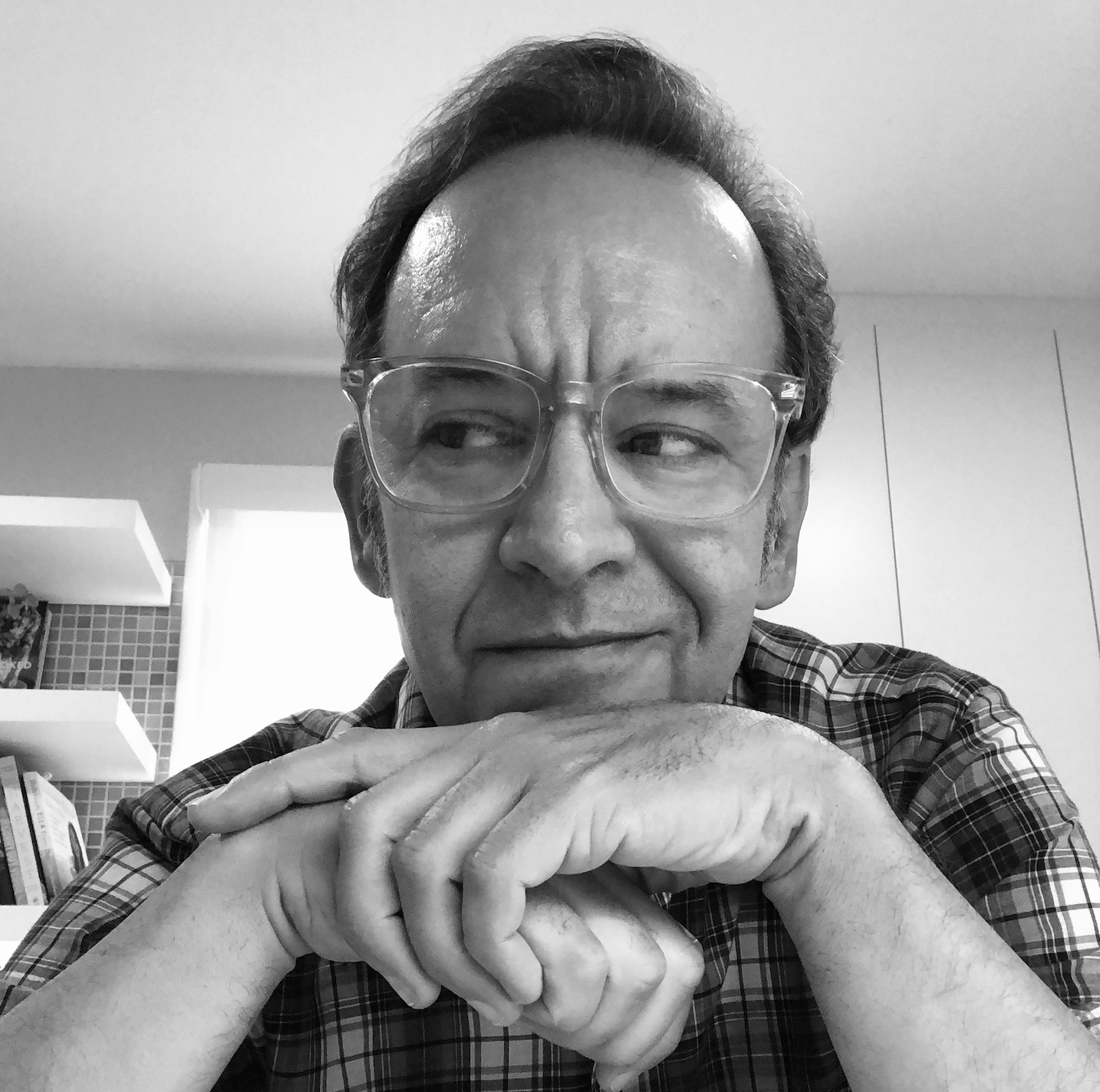“George owned many, many instruments, and all of them were in storage – with the exception of the ones I made for him”: How Bernie Hamburger’s Hamburguitar became a favorite of George Harrison
In the Beatles’ mid-’90s Anthology era, George Harrison’s guitars were built by a man named Bernie Hamburger – and one of his creations features in the video for the band’s final single, Now and Then. But what do we know about these guitars?

Beatles fans know George Harrison’s guitars as well as they know his solos from All My Loving, Nowhere Man and Something. There’s the Gretsch Country Gentleman, the Rickenbacker 360/12, the Epiphone Casino (with Bigsby), the psychedelic Strat nicknamed “Rocky,” the ’68 rosewood Telecaster. They’re as much a part of the band’s visual history as velvet-collared suits and Sgt. Pepper mustaches.
But in November 2023, when Now and Then added a new epilogue to the Fab Four’s catalog, an unfamiliar guitar came with it. As seen in Peter Jackson’s short film about the making of the track, there’s Harrison in the studio, playing a double-cutaway electric, cherry red with white trim.
“When it showed up in the video, I jumped higher than Michael Jordan,” says Bernie Hamburger, who built the guitar for Harrison in the mid’90s – a Hamburguitar Model S. Hamburger also made the handsome emerald green Tele-shaped Model T that appears in the Beatles’ Anthology-era Real Love music video.
To his delight, Hamburger discovered that these were Harrison’s go-to guitars during his later years. “After George passed away in 2001, his guitar technician, Alan Rogan, told me that George owned many, many instruments, and all of them were in storage – with the exception of the ones I made for him,” he says. “Those were always within reach, plugged into an amp, ready to play. So I guess he liked my stuff.”
Hamburger was born in the Bronx and, like many baby boom kids, had his life forever altered on February 9, 1964, when the Beatles appeared on The Ed Sullivan Show. And like many kids, he soon got his first guitar, a “Tesco Del Rey type of thing.” But there was a difference.
“I didn’t like the way it played,” he says. “So I borrowed my father’s tools, and little by little I got to whittle at it until it played really nice. I was just a kid – but my friends said, ‘Hey, can you make my guitar feel like that?’ So one thing led to another.”
The customers always call the shots. I shape each guitar neck to their specifications
By the late ’70s, Hamburger was modifying guitars professionally, which led to him wondering if he could make one of his own from scratch. “I thought, ‘Let me get the stuff to do it,’ and I’m not talking about kits,” he says. “I got the wood, I did everything hand-carved, put in all the electronics. And that very first guitar, believe it or not, I sold to Andy Summers from the Police.”
Get The Pick Newsletter
All the latest guitar news, interviews, lessons, reviews, deals and more, direct to your inbox!
Through the ’80s, he added such high-profile clients as Bruce Dickinson of Iron Maiden and Howard Leese and Nancy Wilson of Heart.
“The customers always call the shots,” Hamburger says of his approach to making guitars. “I shape each guitar neck to their specifications. As for body design, when I got into building, there were certain ones I always loved – the Jaguar, the Telecaster, Gibson Les Pauls and SGs. They’re just great designs, and they work ergonomically. I did also come up with some of my own ideas and designs as well.”
In 1991, Hamburger’s date with destiny arrived, when he was invited to attend a function in London to commemorate the 20th anniversary of the opening of the Hard Rock Cafe. “I was told that Carl Perkins and George Harrison were going to be there,” he says. “So I randomly grabbed two guitars that I’d recently built and flew over.”
Those turned out to be the aforementioned red and green models. The guitar-maker met Perkins (who loved both instruments) first; then he set up a meeting with Harrison.
Hamburger says even though he’d “met a lot of rock stars, meeting a Beatle was a little different.” But Harrison was “friendly and approachable and treated me like we knew each other forever.
“Next thing I know, I’m sitting there in a hotel room with both of them, and they’re trading licks back and forth, doing [Perkins’] Everybody’s Trying to Be My Baby and Your True Love. It’s my hero – and my hero’s hero – playing my guitars. Are you kidding me?! I thought, ‘This can’t be happening.’ It was so surreal.
“Then George said, ‘Bernie, this is a really nice guitar. By the way, can you make mandolins as well?’ I’d never made a mandolin in my life. But I told George, ‘Absolutely.’ So he hired me.”
On that memorable day, Harrison took both custom guitars (Hamburger later made another green Model T for Perkins). Fast-forward to 1994, when the three surviving Beatles were fleshing out some John Lennon home demos for the Anthology project.
“They were in the studio with Jeff Lynne, and George called me,” Hamburger says. “He says, ‘Hi, Bernie. How’s it going?’ And I can hear the chatter in the background, like Ringo’s talking to somebody. George says, ‘I have to tell you about the green guitar. It tracks really well. It stays in tune and just has a beautiful tone. I’m loving it. I just wanted you to know.’”
Harrison could’ve obviously had any guitar in the world, new or vintage. So it’s not lost on Hamburger how incredible it is that he chose his.
“The Beatles were always forward-thinking,” he says, “and I think George was the one who experimented with many brands of guitars, many types of stringed instruments – ukulele, sitar, mandolin, you name it. I also think he was more of a gearhead than the other Beatles, and maybe more open to trying out new instruments.”
The association with Harrison led to other high-profile clients, such as the Heartbreakers’ Mike Campbell, who owns several Hamburguitars. “A lot of these artists would say, ‘If it’s good enough for a Beatle, it’s got to be good enough for me,’ ” Hamburger says with a smile.
In the years before George died, the two maintained intermittent contact. Harrison commissioned Hamburger to make a guitar as a gift for Microsoft co-founder Paul Allen. Harrison and his son Dhani sent Hamburger hand-made Christmas cards. And there was even talk of a world tour that never materialized.
“My name was on the itinerary as his traveling guitar technician,” Hamburger says. “I would’ve loved to have done that.”
These days, Hamburger lives in Las Vegas, where he plays the occasional gig, does custom modifications and runs his guitar-making business via Hamburgerguitar.
He also has a YouTube channel with instructional videos on how to play Harrison’s solos (he counts Old Brown Shoe and Cheer Down as his two faves).
While he is uncertain of what became of the guitars he made for Harrison – does Dhani have them? Are they still at Harrison’s house, Friar Park? – he still feels a thrill of knowing they played a small part in Beatles history, and that he got to share some memorable moments with his musical hero.
“I’ve met so many rock stars, and several of them have big egos,” he says. “What’s funny about George Harrison is that he just acted like the regular guy who lives next door.
“That’s such a cool thing. Here’s a legend, someone I worship, and he was such a sweetie. I feel so fortunate that I got to know him. And now, seeing him again in the Now and Then video, with my guitar – I mean, it’s unbelievable.”
Bill DeMain is a correspondent for BBC Glasgow, a regular contributor to MOJO, Classic Rock and Mental Floss, and the author of six books, including the best-selling 'Sgt. Pepper at 50.' He is also an acclaimed musician and songwriter who's written for artists including Marshall Crenshaw, Teddy Thompson and Kim Richey. His songs have appeared in TV shows such as 'Private Practice' and 'Sons of Anarchy.' In 2013, he started Walkin' Nashville, a music history tour that's been the #1-rated activity on Trip Advisor. An avid bird-watcher, he also makes bird cards and prints.
“I didn’t use any amps. The pedal that saved me was the Boss Super Overdrive”: How Yves Jarvis made 2025’s most exciting experimental record so far with a $50 Explorer knockoff and an unbelievably weird tuning
“Chess was cussin' when I got to the session with Muddy. But when he heard me, he just sat there with his mouth open”: Leonard Chess wanted to cash in on the folk boom, and asked Muddy Waters to bring him an old acoustic bluesman. He brought him Buddy Guy



![[from left] George Harrison with his Gretsch Country Gentleman, Norman Harris of Norman's Rare Guitars holds a gold-top Les Paul, John Fogerty with his legendary 1969 Rickenbacker](https://cdn.mos.cms.futurecdn.net/TuH3nuhn9etqjdn5sy4ntW.jpg)







